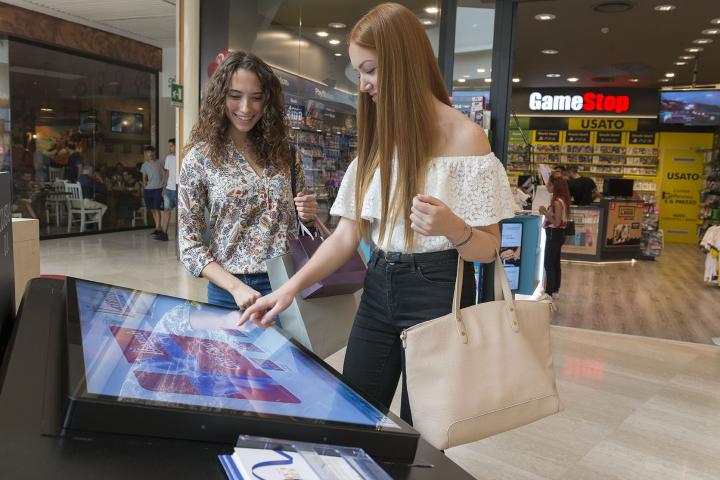IGD is one of the main players in Italy’s retail real estate sector: it develops and manages shopping centers throughout Italy.
In Italy there were 1,269 retail hubs1 at 31 December 2021; 1,025 of which shopping centers covering a GLA of more than 16,100,000 m2 (all shopping centers included in this calculation have a GLA of more than 5,000 m2 and at least 7 units).

1,269 retail hubs of which 1,025 shopping centers
| Annual turnover*: -14.7% vs 2019 +21.6% vs 2020 | Employees (including subcontract employees*):587,000 | ||
| Shopping centers GLA: 16.1 ml sqm | Assets average age: 18 years |
||

60 real estate units of which 27 shopping malls and 19 hyper/supermarkets
| Tenant sales: -11.1% vs 2019 | Employees (including subcontract employees*):16,600 | ||
| Total GLA: 665k sqm | | Assets average age: 11 years** | |
*Subcontract employees refer to all the people that work within the supply chain and that guarantee the daily functioning of the structures, by providing services to help run the Shopping Center (for example cleaning and security) and marketing services (communication and event organisation).
**date since the opening or the last restyling
The small/mid-size shopping centers (with a GLA of less than 40,000 m2), which typically have strong ties with the local community, accounts for 95% of all the shopping centers in Italy. The prevalence of this type of center reflects demographic distribution in Italy where a large part of the population lives in the numerous mid-size cities.
IGD’s portfolio fits well in this context as most of its portfolio is comprised of midsize shopping centers located just on the outskirts of cities; the choice was, in fact, made to focus on mid/large size centers with a dominant position2 in their reference catchment areas: at 31 December 2021 more than 75% of the market value of the malls and hypermarkets that IGD has in Italy have a dominant position in their catchment areas.
The shopping center market in Italy is also very fragmented, with few operators that hold significant market shares3; currently IGD has a market share of more than 3% in terms of GLA (with a total GLA of around 665,000 m2 at 31 December 2021) and is one of the sector’s main Italian player.
1 Retail hubs include shopping centers, retail parks, leisure centers and factory outlets
2 Dominant assets: assets that are points of reference for consumers looking for an appealing and quality offer in their respective catchment areas
3 No operators controls more than 10% of the market
In 2021 retail investment volumes in Italy continued to fall, down by 5% compared to 2020. The result reflects investors’ particularly cautious attitude to one of the sector most affected by Covid-19 containment measures.
The restrictions imposed to limit the spread of the virus brought to a change in the consumer behaviour: consumers have become more familiar with e-commerce in all its forms, causing investors to worry about a growing decline in sales in physical shops over the long term. Despite this , the level of e-commerce penetration at the end of 2021 was still very far removed from thos of US or the major European countries and it seems unlikely that its growth will accelerate further in the long term.

Here at IGD we are also convinced that the growing penetration of e-commerce should not be seen only as a threat to traditional retail, but as an opportunity: online and traditional shopping can co-exist if integrated. This is why our strategy for the next few years will be focused on, among other things, omnichannel concepts, namely connecting and integrating the offline and online buying experience as much as possible. The e-commerce plays an undoubtedly important part, but the physical shop serves a key role in terms of customer experience: the experience offered by physical shopping continues to be unique.
Furthermore, in this challenging and continuously changing environment, we believe the role of the shopping center is evolving, no longer just a place for shopping, but a meeting place and for this reason finding ways to engage and personalize the relationship with our visitors will be of fundamental importance. Our shopping centers will be increasingly more experience and social oriented.
Read more about our strategy